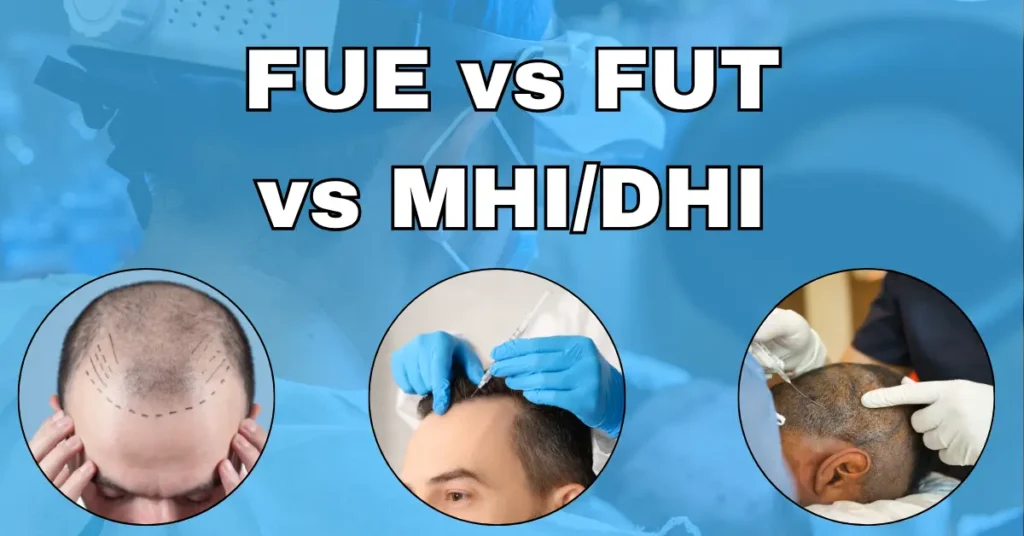Exploring the Benefits of Synthetic Hair Transplants is a great first step if you’re looking for a solution to hair loss that doesn’t involve surgery or long recovery. Unlike traditional hair transplant procedures that use your own hair follicles from the donor area, synthetic implants rely on bio-fibers designed to look and feel just like real hair. This method is ideal for men and women with advanced hair loss or those who aren’t eligible for hair transplant surgeries due to a limited donor site. You get immediate results and minimal downtime—a huge plus for anyone seeking fast, noticeable hair restoration. With proper care, the transplanted hair remains in place for years. If you’ve been exploring different types of hair transplant techniques or wondering how to get new hair growth without a long recovery, synthetic hair transplants could be the right fit. Just be sure to consult a certified hair transplant surgeon to understand your hair transplant expectations and find the best treatment for hair loss for your needs.
Hair loss is a common struggle that affects millions across the globe. While some accept it, many seek a lasting solution to regain confidence. Synthetic hair transplants have quickly emerged as a modern, effective option among the types of hair transplant procedures available today. In this guide, we’ll dive into the real-world benefits of synthetic implants and how they compare to traditional options like follicular unit transplantation (FUT) and follicular unit extraction (FUE).
Before looking at the benefits, let’s break down how a synthetic hair transplant works. Unlike a hair transplant procedure that uses your own hair, synthetic implants involve placing medical-grade fibers into the scalp. These fibers are safe, biocompatible, and closely resemble natural hair in color, texture, and style. Each fiber is inserted into the recipient area where hair is thinning or bald—creating a full, natural look instantly.
While FUT usually involves removing a strip of scalp from the donor area and dividing it into hair grafts, newer methods adapt these concepts for synthetic hair. You’ll also hear about other modern techniques like MHI (Modified Hair Implantation) and DHI (Direct Hair Implantation), which help increase precision and control during the implant process.
A major advantage of synthetic implants is that they offer a non-surgical hair transplant experience. For people who don’t qualify for traditional hair transplant surgeries or prefer to avoid surgery, this is a game-changer. There are no cuts, no stitches, and recovery is almost immediate.
Another huge benefit is speed. While many types of hair transplant techniques can take months to show full results, synthetic transplants offer immediate volume. That means no waiting for hair regrowth—you’ll see a fuller head of hair the same day.
Synthetic implants are also highly customizable. Whether you want straight, wavy, or curly hair—or need a specific length or shade—this method lets you match your look perfectly. It’s a personalized hair restoration solution for anyone looking to match their natural style or try something new.
Cost is another reason why more people are turning to synthetic hair systems. Compared to FUE hair transplantations or FUT procedures, synthetic hair is often more affordable. And while it’s not considered permanent, it delivers long-term results that last for years with minimal upkeep.
Advancements in hair transplant technology have made synthetic fibers more durable, realistic, and safe. Modern synthetic hair even mimics how natural hair reflects light and moves. This ensures the transplanted hair blends in beautifully with existing strands, even in tricky cases like androgenetic alopecia or patchy bald spots.
Worried about longevity? While synthetic implants may not last a lifetime, they’re designed for long-term wear. Most people enjoy their look for several years before needing minor touch-ups. Maintenance is straightforward and often easier than managing a wig or topper.
Before-and-after results often speak for themselves. People who undergo synthetic transplants frequently report major boosts in confidence, and you can visibly see the difference. These transformations help highlight how synthetic options are reshaping the hair transplant experience for good.
How does it compare to other types of hair transplant methods?
- Traditional methods like FUT and FUE use your own hair follicle from the donor site. While these can be permanent, they require longer healing times and may involve multiple sessions.
- Wigs and toppers are temporary solutions. Synthetic implants, on the other hand, offer a semi-permanent fix that doesn’t need daily removal.
- Hair loss medications can help—but only if taken continuously. Synthetic implants provide a “one-and-done” approach, giving you immediate coverage without daily treatment.
If you’re ready to explore your options, look for a trusted hair transplant surgeon or clinic in your area. Searching for “synthetic hair transplant near me” can connect you with transplant surgeons who understand the latest tools, techniques, and patient needs.
In short, synthetic hair transplants offer a powerful and flexible solution for hair loss. Whether
you’re exploring advanced techniques like DHI, FUE, MHI or looking for a quicker, simpler
approach, synthetic transplants deserve a closer look. With benefits like fast results, a natural
feel, and affordability, this innovative treatment is helping more people feel confident and regain
the hair they’ve lost.

















